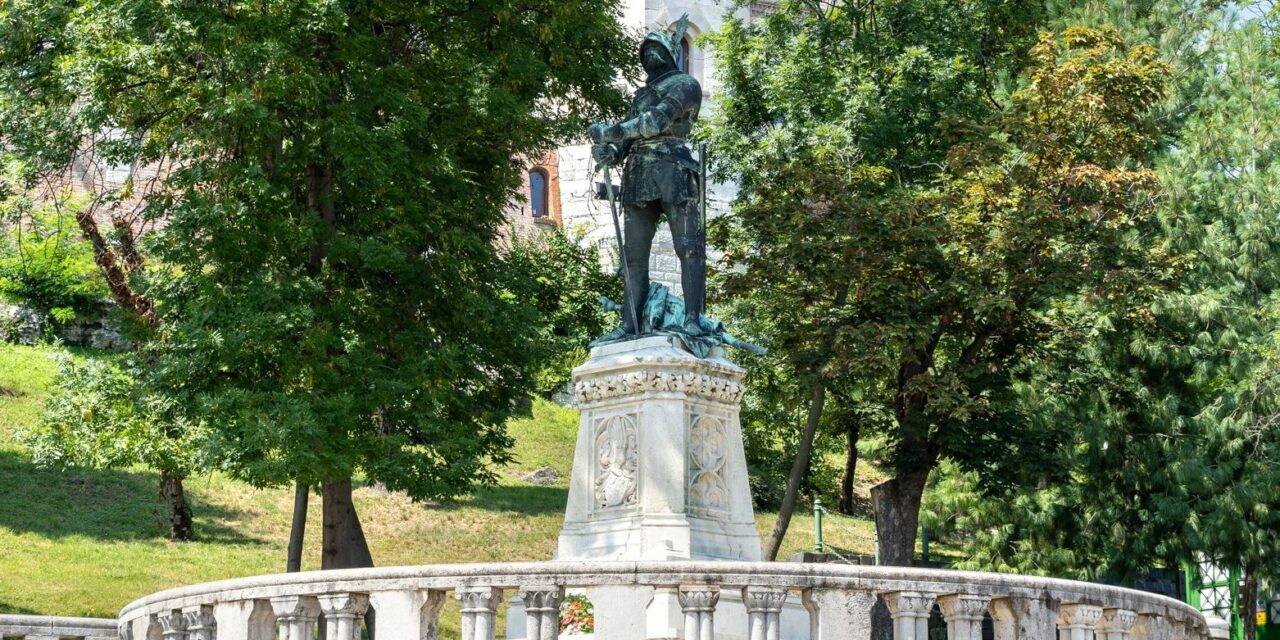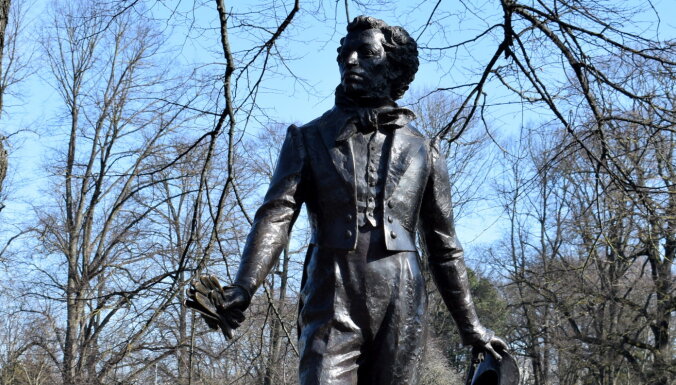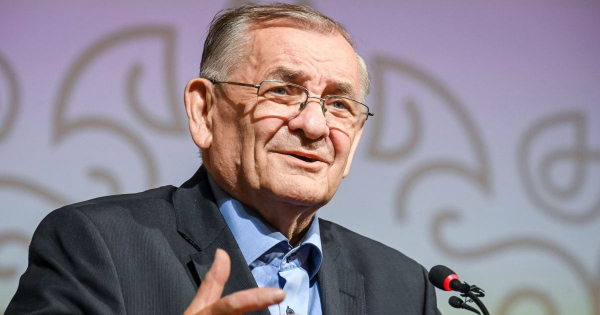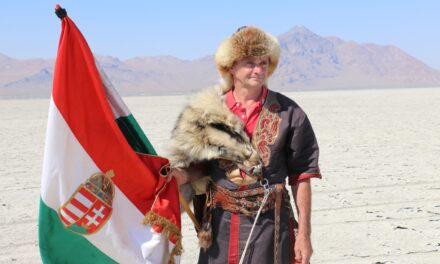A nation that does not know its past does not understand its present, and cannot create its future!"
Europe needs Hungary... which has never let itself be defeated.
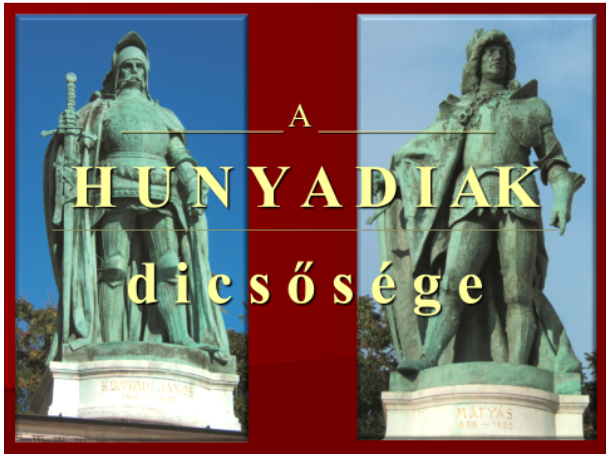
The beginning of the Islamic attacks on Europe
Our topic is the Hungarian Middle Ages. But when the 14-16. we are talking about Turkish attacks in the 19th century, it should be known that this was not the first Islamic campaign against Europe, Christian Europe. When Muhammad left Mecca in 622 and "ran" with his followers to Medina, a new religion, Islam, was born. (Meaning: acquiescence, submission, devotion.) The hijra, i.e. Muhammad's run, was the beginning of a new world religion, which today is perhaps the largest in number. According to Muhammad's teachings, Jews and Christians are infidels, against whom holy war is permissible, even obligatory.
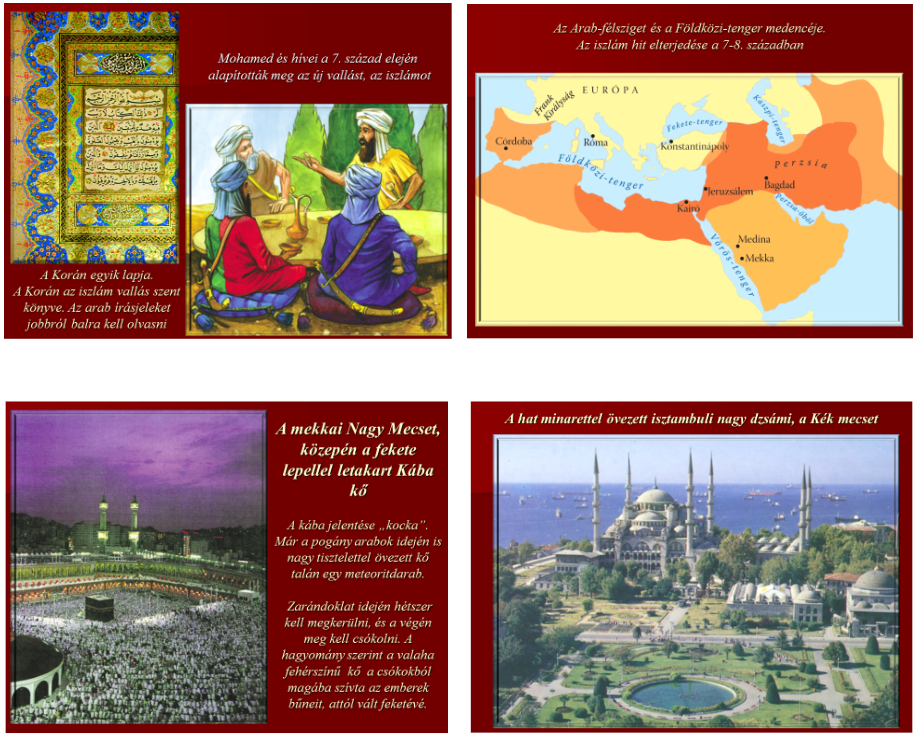
By the end of the 7th century, Arabia, Asia Minor and North Africa came under the control of the Islamic Arabs. In 711, Muhammad's followers crossed the Straits of Gibraltar - (from the name of the Arab leader Gab al-Tarik) - and attacked Europe from the west. From the east, the armies of the Baghdad Caliphate threatened Christian Europe between 705-711. From the south, the Arab pirates in the 8-9. century, they penetrated all the way to Rome and ransacked the city of the popes, not even sparing St. Peter and St. Paul . Christian Europe repelled these attacks. Except for the territory of today's Spain, in which the Arabs established the Córdoba Caliphate.

Origin of János Hunyadi
János Hunyadi , the origin of the family, is the subject of heated debates among historians from time to time, but beyond that, it also arouses the interest of Hungarians and Romanians in the public discourse. The latter prove the Romanian (Vlach-Olach) origin of the family. But where was Romania then? The Romanians refer to the roots of the Hunyadi family in Havasalföld, which is true, but they do not add that Havasalföld dates back to the 13-14th century. century it was part of Kunorzág. This also explains why the names of the "Romanian" nobles (boyars, Kenez) are of Kun origin. The name of the first ruler of the Havasalföld Voivodeship of Kun origin was Basarab (1317-1352), whose father was none other than Toktemür , one of the leaders of the Golden Horde. However, Romanian historians also "found out" that the Hunyadis are descendants of a Romanian serf family. Despite this, Radu Lupescu does not rule out a relationship with Basarab the Kun.

Let's take a look at some explanations of the origins of the Hunyadi family. The story that fits into one of the legends, according to which János Hunyadi was the son of Sigismund of Luxemburg There is a historical anecdote about the fact that Zsigmond met the beautiful Erzsébet Morzsina , and from this meeting a child named Vajk/János was born. The tale of folk origin by Gáspár Heltai, , who Bonfini's work as a source. The name Vajk-Vojk (wolf in Serbian) is clearly of Old Turkic etymology, i.e. it proves Kunian roots. Let's not forget, however, that Szent István 's original name was also Vajk.
Zsigmond's "paternity" is indicated by the fact that the family received, among other things, the castle of Hunyad in Transylvania and the estate belonging to it in 1409 from him. The relationship between Zsigmond and the Hunyadis is strengthened by the fact that the powerful king and emperor took the young János with him on his trips to Italy.
The origin of the family from the ancient Roman patricians was first written by Mátyás's historian, Bonfini, presumably to confirm the European greatness of the king. (The booklet on the origin of the House of Corvinus derives the Hunyadis from the Roman Valerius Messala Corvinus genus.) This theory was adopted by later historians, including Miklós Zrínyi .
The high degree of falsification of history Mátyás Hunyadi's birthplace in Cluj. The memorial plaque in Romanian and English informs unsuspecting foreign tourists that the son of the Romanian Janku Hunyadi, the Romanian Matei Corvin, was the greatest king of the Hungarians. (Understand that one of the greatest Hungarian kings was also given to our country by the Romanians.)

A more serious proof - although less well known - Péter Veréb , viceroy of Transylvania. In 1403, the Viceroy of Transylvania and his family moved to this quiet corner of the Mátra, to the family's estate in Nógrád. The Verebély family in Vereb was connected to the Hunyadi family in Transylvania. This is indicated, among other things, by the kinship of the coat of arms of the raven holding a golden branch in its beak and a ring in its beak.
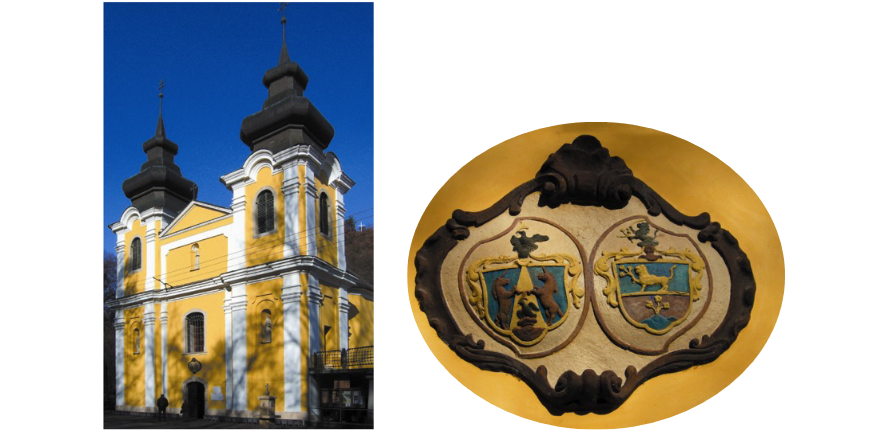
The church of Mátraverébély-Szentkút
Jank Szibinyáni in their fairy tales, reggae, and even in their scientific works .
The fact that the family was Roman Catholic speaks against the Romanian origin, which was already in the 14th-15th century.
even in the 19th century, a sharp border separated the Romanians from the Orthodox faith. It is well known that Orthodox believers never convert to another religion, including the Roman Catholic faith. And it is completely unbelievable that a young man of Orthodox faith (János Hunyadi) could have been part of the entourage of Sigismund of Luxemburg, the champion of the Roman Catholic faith.
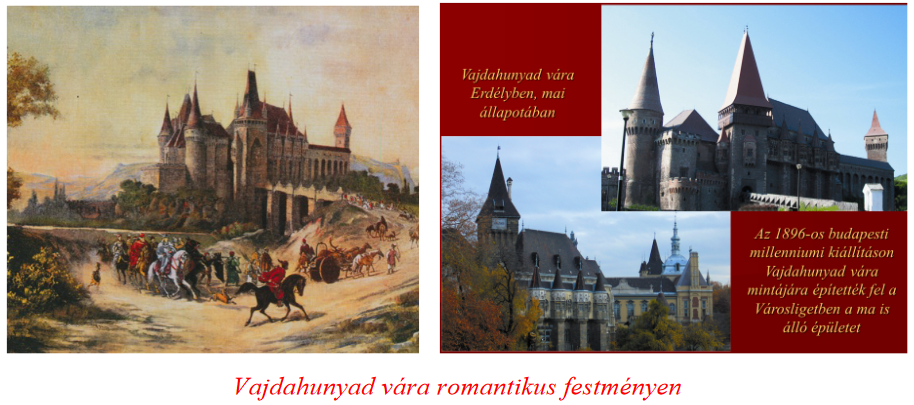
Historians of our time - from here and beyond - can describe theories that lack any basis in reality. Those cities, buildings, estates, material monuments that once played an important role in the life of the Hunya people, today belong to the territory of Romania, Serbia, Croatia, Austria, Slovakia, the Czech Republic, Poland, Germany. Examples include Vajdahunyad, Bánffyhunyad, Cluj, Gyulafehérvár, Bratislava, Léka, Bautzen, Görlitz, Brünn, Boroszló, Bécsújhely, Felsőőr, Szabács, Jajca and Nándorfehérvár, which today's Hungarian citizens certainly need a passport to visit.
The rise and marriage of János Hunyadi
We do not know the exact date of birth of one of the greatest figures in our history. His place of birth is Cluj, but the house in which he was born is not known. The father, the son of Serbe , Vajk himself was a court knight wielding weapons. Among the members of the large family, János Sr. ran the brightest course. All we know about the younger János (it was common for brothers in the same family to have the same name) is that he died in a bloody battle in 1441.)
Zsigmond , who was struggling with constant financial problems, also asked and received a loan of 1,200 gold forints from Hunyadi. It was a respectable amount, which Zsigmond paid back not in money, but with the properties in the counties of Arad and Temes that were pledged. In the 1430s, Hunyadi's military virtues, brilliant organizational skills, and political insight were already widely known. He was also aware that the use of mercenaries could be decisive in the outcome of battles. However, this required money, a lot of money. When Sigismund died in 1437, the throne was inherited by his daughter Elizabeth of Luxemburg , with whom her husband, Albert of Habsburg , also came to power.
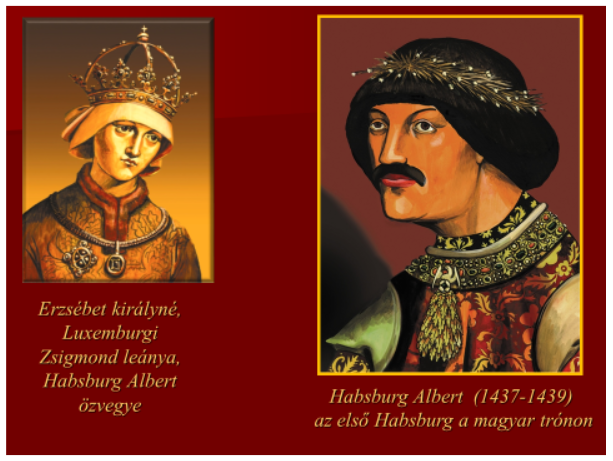
After Zsigmond, Albert - the first Habsburg king on the Hungarian throne - recognized Hunyadi's abilities and provided him with donations and positions. He appointed him, among other things, the ban of Szörényi, and with this Hunyadi rose to the rank of barons. However, the young king fell ill and, according to the chronicle, died in the village of Neszmély on his way to Vienna.
(One of the significant twists in the adventurous history of the Holy Crown is linked to the death of Albert. Queen Elizabeth, who was already pregnant at the time, fled from her opponents to Bratislava. Since she was predicted to have a son, she wanted to secure the Hungarian throne for her son. Therefore, her confidential lady-in-waiting, Kottaner (He entrusted János László V. )
The power struggle between the barons renewed, while the Turks were getting closer and closer to the Hungarian border. Few noticed the danger, but Hunyadi's time had really come.
Erzsébet Szilágyi in the 1430s , which was a lucky choice, and this was clearly confirmed in the following decades. László born in 1431 , who tragically lost his life at a young age. And on February 23, 1443, one of the greatest personalities of Hungarian history, Mátyás Hunyadi, was born.
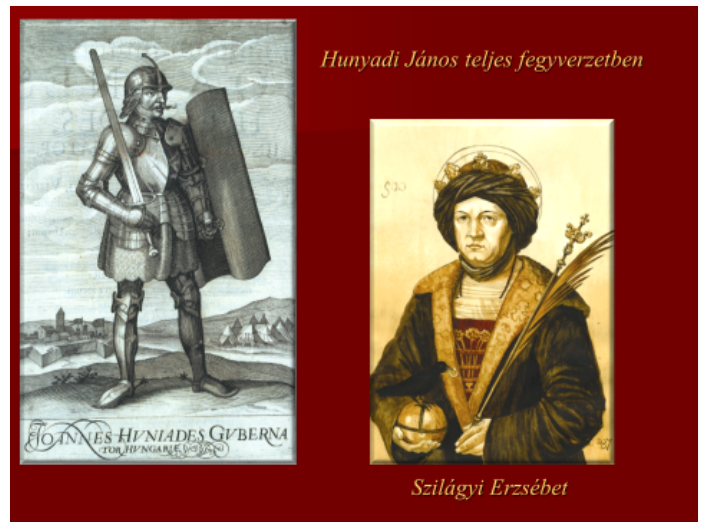
By rising to the ranks of the barons, Hunyadi had to face another difficulty. The great powers of the country gathered in leagues against each other, weakening the strength and unity of the country. Ulászló Jagielló , who was also elected king in 1440 . Hunyadi and Újlaki were on the side of Ulászló, but László Garai and Erzsébet Dénes Szécsi sided with him. Jan Giskra, at the head of the Hussites, made life difficult for the country in the Highlands. The Rozgonyi and Kanizsa families ruled Transdanubia, and Bertalan Frangepán ruled the southwestern part of the country. Meanwhile, taking advantage of the internal contradictions, the Turks destroyed wherever they could. During these critical months, János Hunyadi took control, when he focused all his strength and knowledge on the fight against the Turks.
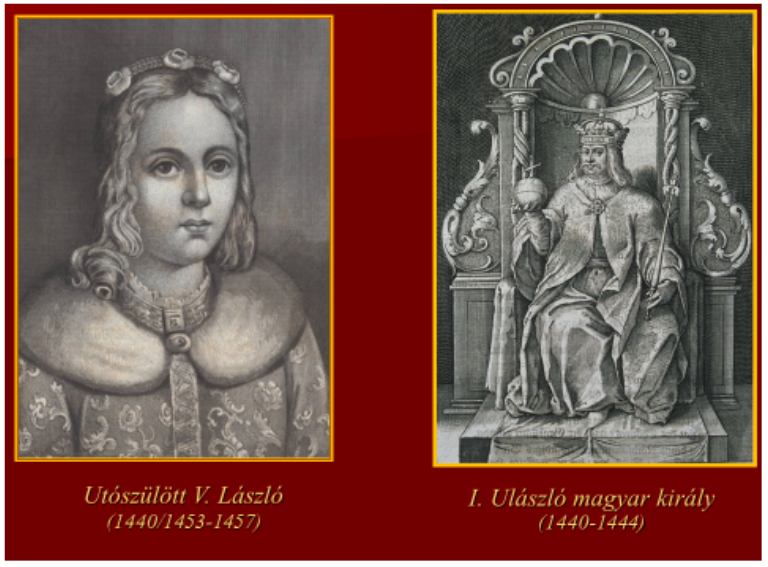
János Hunyadi's campaigns against the Turks
The talented János Hunyadi, although unable to read or write - which was not considered a blatant lack of education at this age - but possessed of great physical strength, absorbed the art of fighting and wielding weapons from a young age. At an early age, György Csáky , he learned the ancient Székely horse-archery technique. In the 15th century, the Szeklers were considered the best archers. We also know from where, where and what he studied. Among the Serbs, Romanians, Albanians, and Bosniaks living in the mountains of the Balkans at the southern ends, he gained great expertise in the affairs of the Balkan light cavalry. István Lazarevics, he learned the "Balkan type" trickery, the art of deception. Miklós Újlaki experienced the fighting manner of the people of Végvár in the service of the macho Bán. A little later, he performed family duties with the Monoszlai family and the bishop of Zagreb.
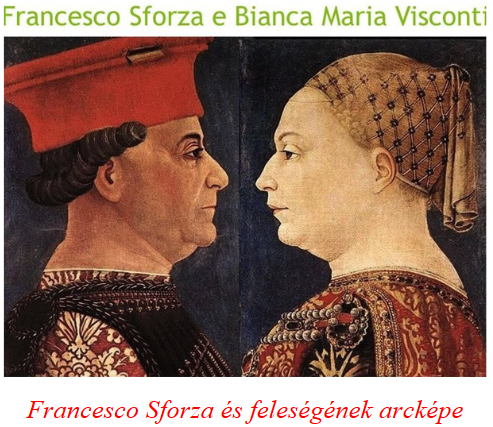
he learned the martial arts of the mercenary leader, condottiere Francesco Sforza Among other things, he became a connoisseur of the secrets of city storming, the use of heavy weapons and firearms, street fighting, securing supplies, and mercenary warfare. However, we also know that Hunyadi Duke Visconti .
The year 1434 brought a significant turning point in his life, when he already served in King Sigismund's army with the title of "court knight".
During Sigismund's time, he got to know the Hussite way of fighting, with particular regard to the combat advantages of the Hussite chariot castle. Hunyadi used iron carts not only for waiting, but also for using firearms.
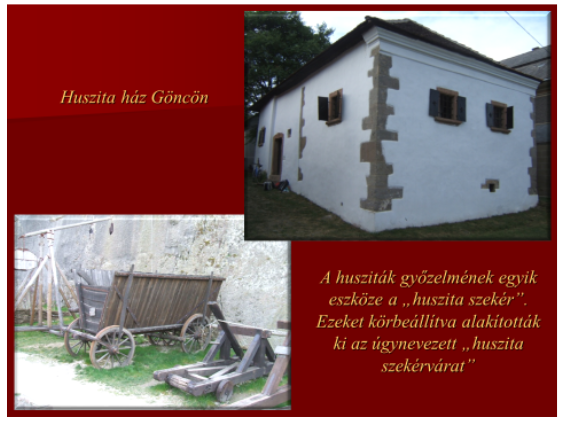
However, starting from the 1430s, Hunyadi got to know and recognized the essence of Turkish warfare and fighting style. That the Ottoman armies are advancing towards Europe, albeit slowly, but methodically. He knew well that Hungary would be an unavoidable obstacle to the sultans' efforts to conquer Europe. Hunyadi's talent as a general culminated in the fact that he was able to combine all these combat techniques and was able to apply the strategy excellently to the given field conditions.
It was not only Hunyadi's duty, but his heart's desire, his task for the family estates, for Hungary, for Christian Europe, to confront the Turks. After Zsigmond, between 1439 and 1441, he received the Szörény bannage, the ispanship of Temes from King Albert and Ulászló I, and also became the voivode of Transylvania and the captain-in-chief of Nándorfehérvár. Of course, the income associated with these also served Hunyadi, who also differed from many of his fellow lords in that he did everything he could to protect the southern ends with his wealth, talent, and military experience.
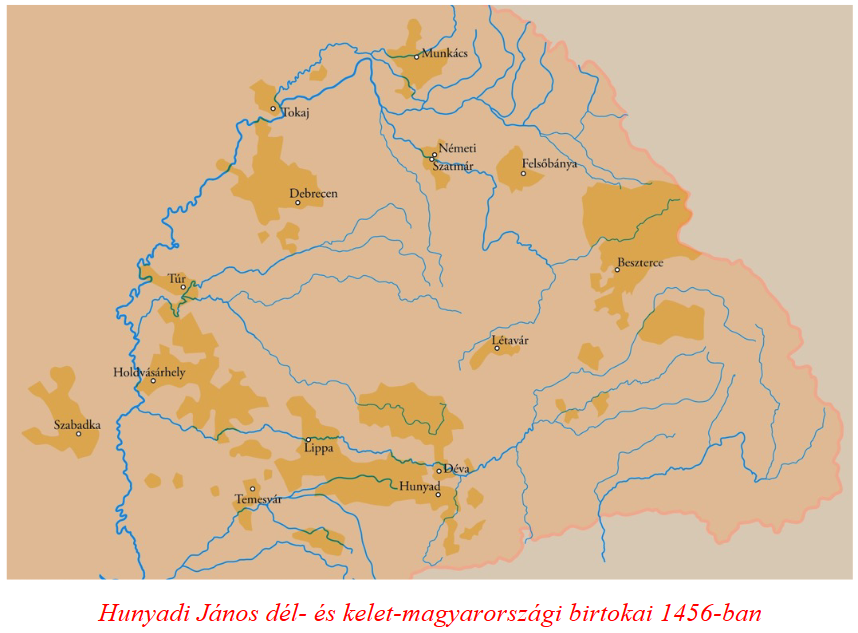

After the minor skirmishes with the Turks, the first significant events took place in 1441-1442. battles of the year, of which the battle near Marosszentimre stands out. The first clash ended with a Turkish victory, and Bey Mezid beheaded the bishop György Lépes who fell into his hands. However, Hunyadi did not give up. He cut through the Turkish ring and threw all his energy and time into organizing another army. He returned to Marosszentimre at the head of his new army and won a brilliant victory over the 17,000-strong army of Mezid Beg and the more than 60,000-strong army of Szehabeddin Begler.
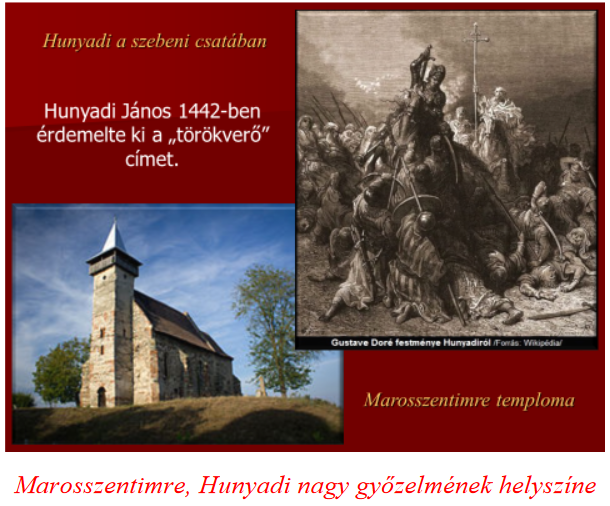
The legendary exchange of armor between
Simon Kemény (Kamonyai) is connected to this previously "unrecorded" - but significant - clash The Turkish elite teams stormed Kamonyai and announced with great joy that they had finished with Hunyadi. However, the great joy turned into terror when the real Hunyadi appeared on the flank, winning a brilliant victory over the Turkish army. With this battle, János Hunyadi earned the nickname "Turkey beater".

This graphic, made in the 16th century, clearly shows that Hungary, which played the role of a shield against the Ottomans who wanted to invade Europe, was protected by the Teutonic Knights. (This was not the case either! The German Empire only supported our country if its interests so desired!)
Encouraged by the success of 1442, the Hungarians already organized an offensive operation against the Turks, which led beyond the borders. The 1443-1444. The aim of the (long) winter campaign was to expel the Turks from Europe. The operations were successful in the beginning, every clash ended with a Hungarian victory. It is true that the Hungarians were supported by the Balkan states - György Brankovics . However, the Sultan had not yet lined up the main forces, because they were fighting in Asia during those years. However, the campaign stalled in January 1444 at the Zlatica Gorge, east of Sofia. One of the reasons for this was the spread of horse plague in the Hungarian army. The horses died one by one. The other reason is that the passes became impassable in the extreme cold, and the Ottomans blocked them in more and more places.
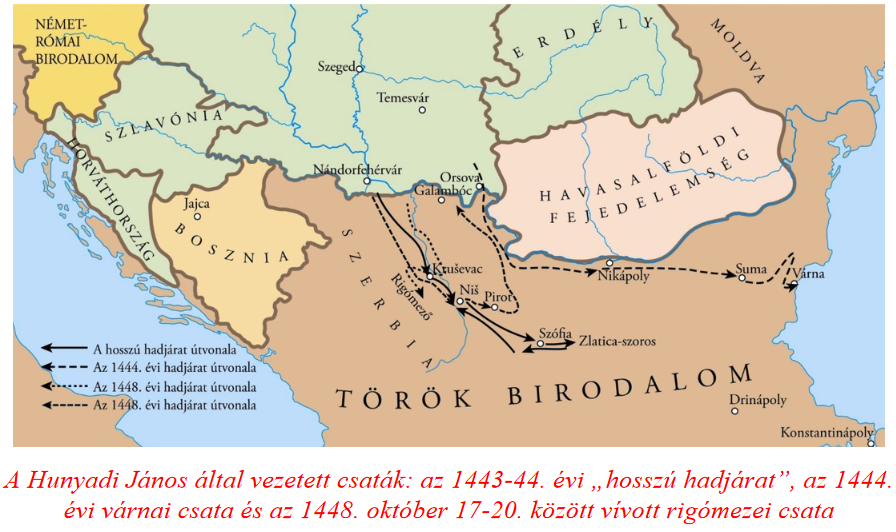
After the victorious winter campaign II. Murad concluded a peace beneficial to the Hungarians. These included the evacuation of Serbia, the payment of 100,000 gold warheads, a ten-year peace, and the placing of 30,000 Turkish warriors in the service of the Hungarian king. (Provided that they cannot turn it against the Sultan.) However, this peace did not agree IV. Pope Jenő , who sent Cardinal Cesarini to persuade the Hungarians to launch another attack.

 The plan to break the peace was developed by Cesarini, the papal legate, which met the goals of the Hungarian pro-war lords and the ambitious young king, Ulászló I. The army was soon ready to set sail, which, according to the plans, would have been supported by the Venetian and Genoese galleys equipped by the Pope, already on their way to the Dardanelles in the summer of 1444. Hunyadi's only ally in this campaign was the Albanian prince György Kastrióta , better known as Szkander Bey . György Brankovics and the other Balkan states no longer supported Hunyadi, because they did not want another war with the Turks.
The plan to break the peace was developed by Cesarini, the papal legate, which met the goals of the Hungarian pro-war lords and the ambitious young king, Ulászló I. The army was soon ready to set sail, which, according to the plans, would have been supported by the Venetian and Genoese galleys equipped by the Pope, already on their way to the Dardanelles in the summer of 1444. Hunyadi's only ally in this campaign was the Albanian prince György Kastrióta , better known as Szkander Bey . György Brankovics and the other Balkan states no longer supported Hunyadi, because they did not want another war with the Turks.
Later, Szkander Bey did not join the Hungarians either. Under such circumstances, the king and Hunyadi arrived in Varna at the head of the armies. The successful campaign was given the coup de grace by the sailors of the Christian Venetian and Genoese galleys. Instead of preventing the Sultan's armies from crossing from Asia to Europe, the ships of the squid cities transported Islamic soldiers for one gold each. Thus, the main Anatolian army fell behind the Hungarians lined up near Varna. The 40,000-strong Hungarian army was thus at a strategic and numerical disadvantage.
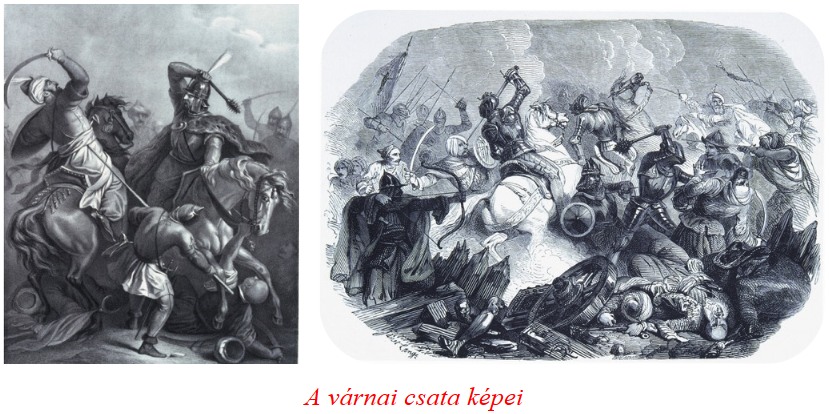
The Hungarian army had no choice but to face the overwhelming force. Hunyadi, worthy of his name as the "beater of the Turks", grinded down the protective rings of the Turkish army with methodical leadership, and was already facing the janissaries protecting the sultan, when Ulászló made a big mistake. Maybe he was driven by ambition, the belief in a sure victory, or even the desire for glory, when he rushed at the head of his five hundred horsemen - without Hunyadi's knowledge - to the Sultan's camp surrounded by piles. The king's action dashed the hope that they could win, when he found himself facing the janissaries that had not been deployed so far. They all fell to the ground, the army was disbanded, and the battle of November 10, 1444 is one of the great tragedies of Hungarian history. Hunyadi was also only able to return home in life-threatening circumstances full of twists and turns.
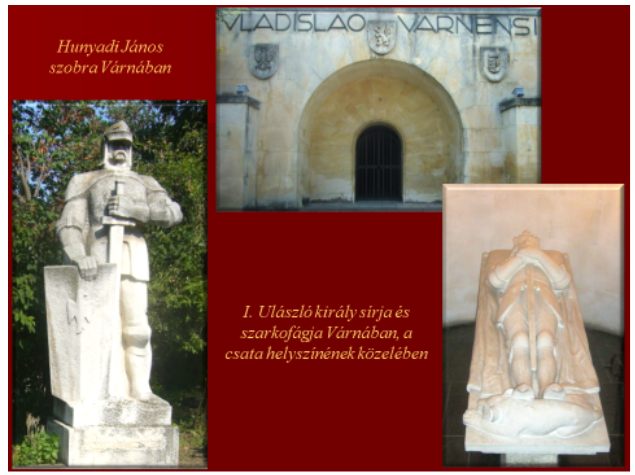
The election of János Hunyadi as governor
The king is dead. The rightful successor, who had already been chosen as the Hungarian ruler under the name László V Hungarian historiography refers to him as László Utószülöt by his nickname (It is worth noting that he was the second Habsburg to become Hungarian king, but the only one born on Hungarian soil.) III. Frederick (1440-1493) German-Roman Emperor, who already acted against János Hunyadi. However, the real opponent of the Habsburg emperor will be Mátyás Hunyadi.
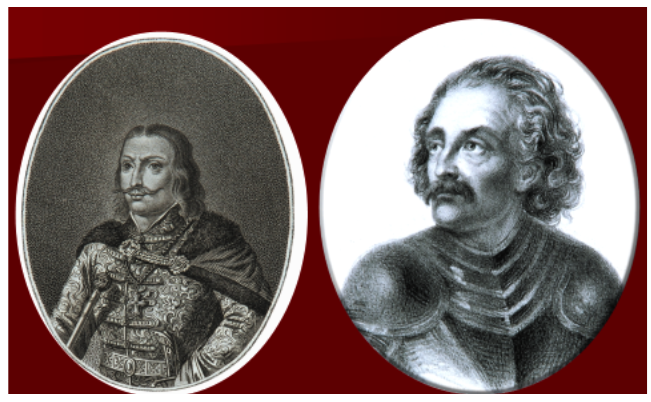
In the temporary difficult situation, so that the country could be managed, seven captains were elected to lead the Kingdom of Hungary: János Hunyadi, Miklós Újlaki, György Rozgonyi, Mihály Guti Ország, Imre Bebek and Pongrác Szentmiklósi , and Jan Giskrá . Each of the seven captains-in-chief received a territory from the body of the country, over which, however, they did not have unlimited power, they had to agree with the nobility of the territory. Hunyadi then made an alliance, a lifelong friendship, with the man of the spirit, János Zrednai (Vitéz) , whom he appointed bishop of Varad.

Considering that III.
Frederick did not give the Hungarian lords either the Holy Crown or László V, so the Hungarians could not hold the election of a king. At the parliament convened on Rákos mező in May 1446, the nobles decided to elect a governor. The choice could not fall on anyone other than the famous general, János Hunyadi. The lords of the opposing party were also present at the Rákos field, for example III. Frederick's allies, supporters of László V. However, the person of the governor was decided by the commoners who attended the meeting in large numbers, who almost unanimously voted for Hunyadi.
What rights does a governor have? His power is practically the same as that of the king, and he rules the country in the name of the crown. He just hadn't been crowned with the Holy Crown.
 Governor János Hunyadi's first task was to attack III. Frederick. The emperor's ally was, among others, the Styrian margrave Cillei Ulrik .
Governor János Hunyadi's first task was to attack III. Frederick. The emperor's ally was, among others, the Styrian margrave Cillei Ulrik .
The governor pushed into the territory of Austria and even occupied Bécsújhely, Frigyes' favorite city. He was not able to achieve a resounding success, because despite his defeats, the emperor did not surrender either the crown or László V. the Hunyadis made an agreement with the opposition Cillei, according to which their minor children - Mátyás Hunyadi and Erzsébet Cillei - were betrothed to each other.

In 1447, the governor already organized the resistance in the southern ends, because the Turks were getting closer. János Vitéz the emperor , and in the meantime, the general drove the pro-Turkish lord of Havasalföld from his throne, thus strengthening his positions in the Balkans. Some of the peoples of Western Europe sensed the Ottoman threat and encouraged Hunyadi to start a war against the Turks. Significant monetary donations were also promised. (For example, King Alfonso of Naples 100,000 forints.) But, as happened regularly, the help did not arrive, or only partially. Hunyadi could not wait, because the Turkish army was already in the Balkans. The Hungarians set off with an army of 25,000 people towards the southern ends. They could count on the 8,000-strong army of the Havasalföld voivod, as well as the support of the Serbian despot György Brankovics and the Albanian prince Szkander Beg. The Turks marched on Rigómező with an army of about 60,000 men.
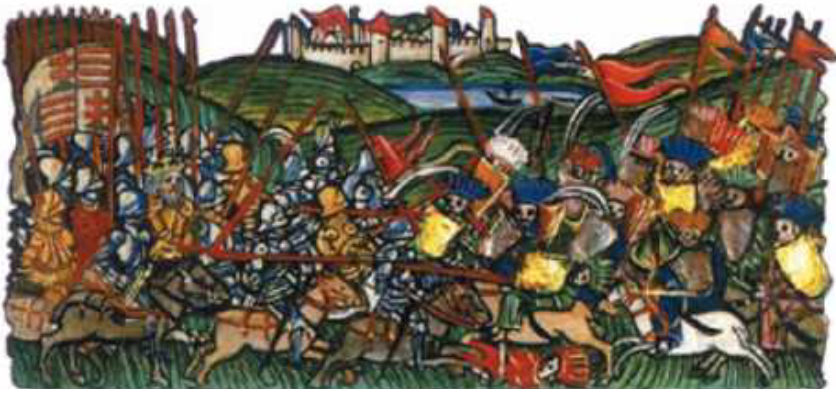
![]()
When Hunyadi arrived at the site of the battle, Rigómező (Kosovo), the Turkish superior force - with the help of the troops of the traitor György Brankovics - had already cut off Szkander Bey's troops from the Hungarian army.
(It should be noted that this was the second battle of Rigómez, since the first major battle took place in 1389, during Sigismund's reign.) II. Sultan Murad lined up his troops in the traditional manner. In the center is the infantry force of the Janissaries, in front of them is the artillery, and on the two wings are the Anatolian and Rumelian cavalry. The clashes that began on October 16 began with minor Hungarian victories, but these presumably served the Sultan's tactics.
The Turks used the tactic that proved fatal a few decades later, in 1526, at Mohács. The Hungarian cavalry was tricked into a trap. The sad result of the battles that lasted for several days was that the barons lost everything, and Hunyadi was saved only by the self-sacrifice of one of his brave men.
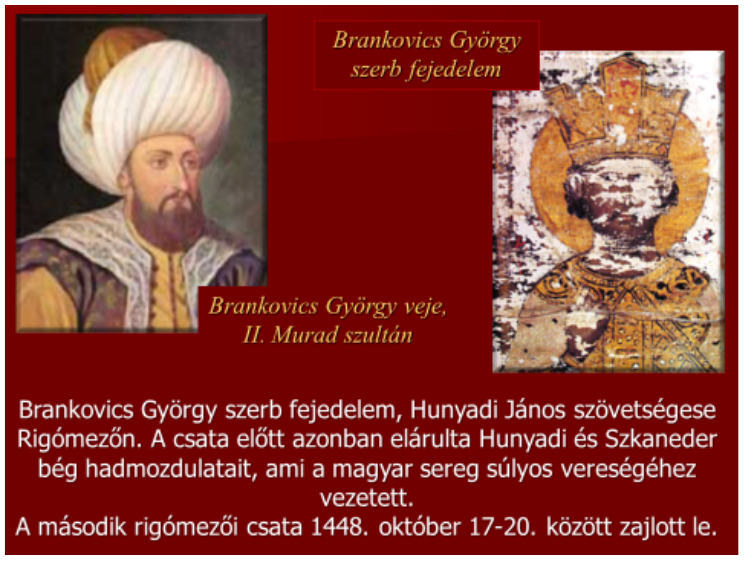
Hunyadi was captured by Serbs who had defected to the Turks. György Brankovics wanted to hand over the governor to the Turks, but in the end he didn't dare because the Hungarian lords threatened him. However, he demanded a HUF 100,000 ransom, and László Hunyadi, the governor's older son, had to be sent as a hostage to Szendrő Castle.
(After the battle, due to the unburied dead, a plague that lasted for years reared its head, so Kosovo remained uninhabited for a long time. The first settlers were the Albanians, and this is when the process of the Serbs being forced out of the land of Kosovo /Rigómező/ began.)
In 1449, the Hunyadi party already fought against Giskra, when the governor himself led a campaign to the Highlands.
The time-consuming battles with human sacrifices ended in 1450, as a result of which the rich trading and mining towns in the highlands remained in Giskra's hands. However, the property conditions were also favorable for Hunyadi, since in 1450 he already had 4 million hectares of land, 57 market towns, about a thousand villages and 28 castles. Despite all of this, in order for Hunyadi to retain his authority and power, in the summer of 1450 he entered into an alliance with Palatine Garai and Miklós Újlaki of Transylvania. However, the Hunyadi-Garai-Újlaki league only met short-term interests, because the composition of the leagues changed every year.
In the middle of the 15th century, however, the commoners also represented a significant military and political force due to their large numbers. In an almost unique way in Europe, the concept of natio Hungarica, the "Hungarian nation", was born in our country.
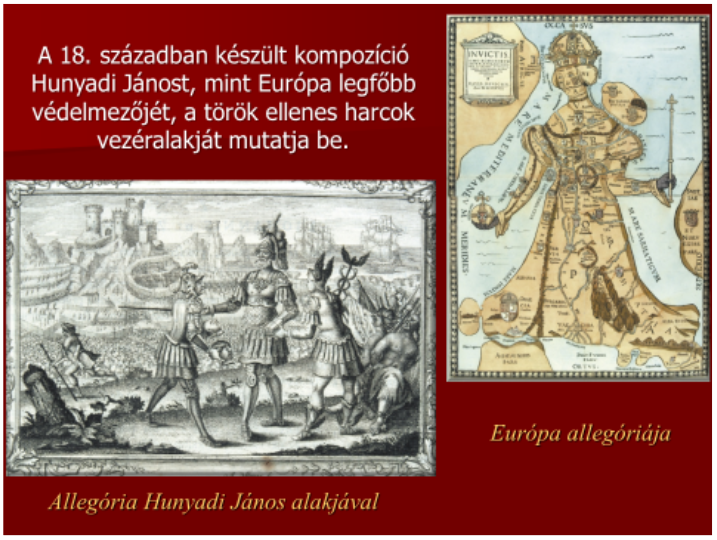
The West, in order to calm its conscience, because it could not or did not want to provide effective help to our country, awarded Hungary the title of "defensive bastion of Christianity".
The Nándorfehérvár triumph and its antecedents
The 1450s brought a significant turning point in the history of the Ottoman Empire, the Kingdom of Hungary, the Papal Court and the West. The head of the Turkish empire is II. Mehmed (1451-1481), who is rightly regarded in historiography as the World Conqueror.
He reorganized the Ottoman army, created the modern political administration, and then made the Ottoman Empire a great power. An event of world historical importance took place when the Ottomans captured Byzantium in 1453. The sultans moved their headquarters to this strategically important city, also known as Constantinople.
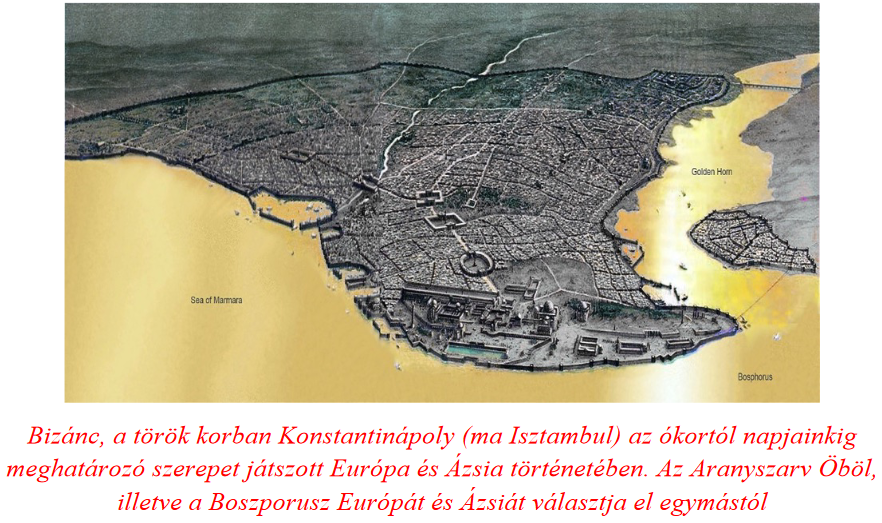
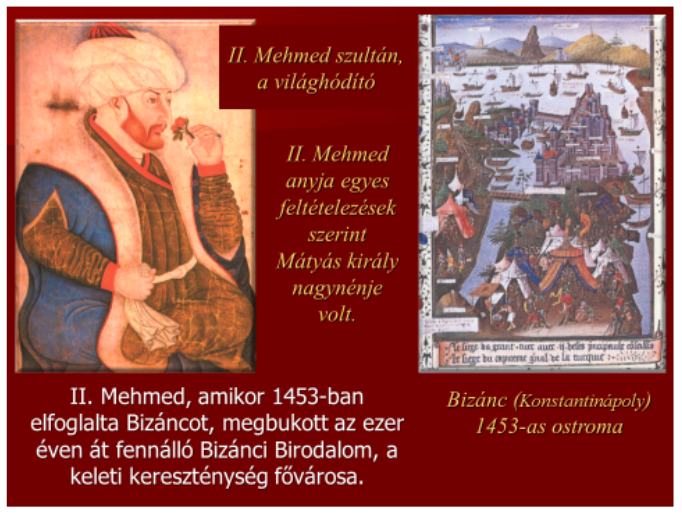
II. Mehmed knew that he had nothing to fear from a united, strong European crusader army. Hungary was thus once again left alone. Meanwhile, the internal crisis had to be resolved. Hunyadi resigned from his position as governor in January 1453 because László V (1453-1457) was confirmed in his royal position. The young king could not control the situation under the pressure of the barons. From time to time he had to accept the patronage of Cillei and the alliance of the Hunyadians.
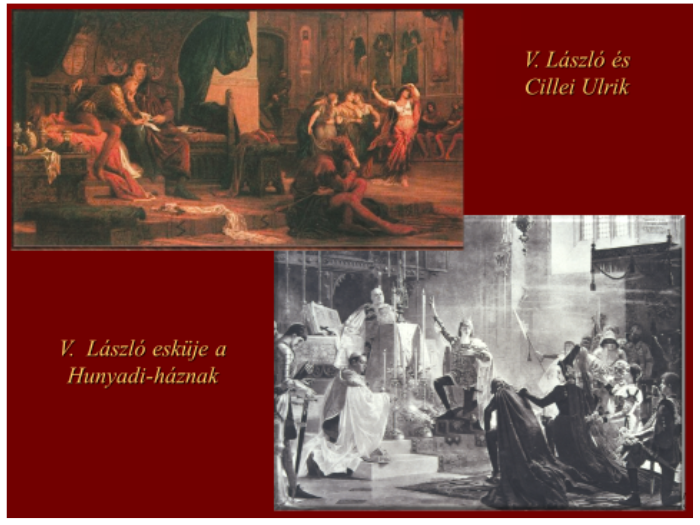
Siege of Nándorfehérvár (July 4-21, 1456)
By the fall of 1455, it became clear that Hunyadi and Hungary were once again left alone. The last hope of the Kingdom of Hungary is the new Pope III. Calixtus , who swore to drive the Turks out of Europe. In the end, he didn't send money and soldiers either, but sent János Kapistzrán , who did more for success with his Latin speeches, personal charm and mobilizing power than an army.
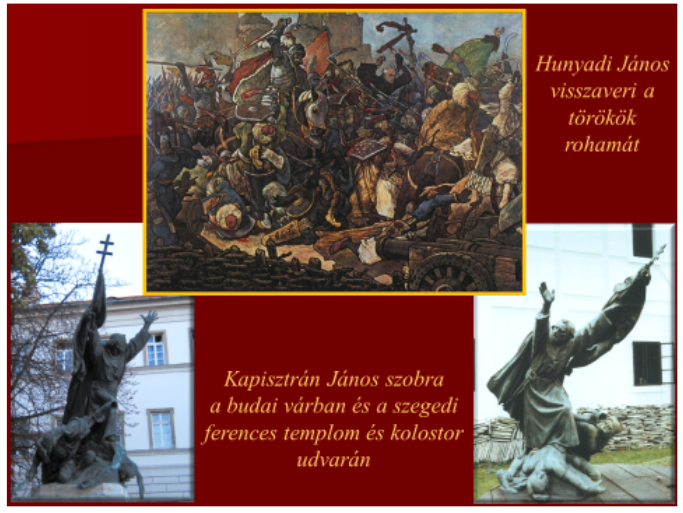
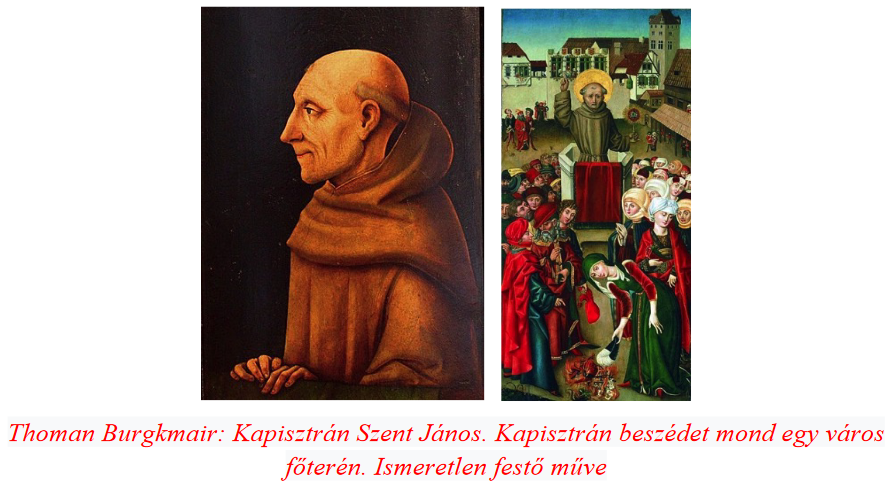
This seventy-year-old Franciscan monk was able to gather an army of tens of thousands of people. Who knows what the outcome of the battle would have been if the Crusaders led by Capistrano had not attacked the Turks? After all, this gave Hunyadi the opportunity to break out of the castle and capture the Turkish cannons.
In the spring of 1456, the Pope ordered a new prayer, calling the faithful to the Turkish danger. The prayer had to be said at noon, when a bell warned the Christians. After the bright victory in Nándorfehérvár, the southern chime remained.
The Pope also sent a naval force to help the Hungarians, but neither it nor the armies of Venice, Milan, Florence, and Genoa moved. The world conqueror II. Mehmed arrived under Nándorfehérvár with an army of 70,000 men, 100 ships, 300 cannons and numerous siege machines. The key to Europe and Hungary is in danger. Hunyadi collected 200 small shaikas and arrived under the castle on the Danube, because he knew that he could not get there any other way.
On July 4, 1456, the Sultan began the siege of Nándorfehérvár. The castle was defended by Hunyadi's brother-in-law, Mihály Szilágyi , with about seven thousand soldiers. After a five-hour struggle on the Danube, Hunyadi broke through the Turkish ship lock and thus was able to enter the castle.

After two weeks of shelling and renewed attacks, the Ottoman army almost "turned the castle into a field", as Hunyadi described Nándorfehérvár.
However, the plague reared its head in the Turkish camp. Therefore, the Sultan decided to make a final attack on July 21, but the defenders could not stand it. Crossing the Sava, led by Capistran, the enthusiastic crusaders routed one of the attackers' flanks. The Sultan sounded the alarm, thanks to which the Turks left the castle gate unprotected. Hunyadi noticed this and immediately broke out with a select team of horsemen. They captured the cannons of the Rumelia corps and wreaked havoc among the Ottomans, who they shot with their own cannons. It was a sign of the glorious Hungarian victory that the next day the remnants of the Turkish army literally ran away from the battlefield.
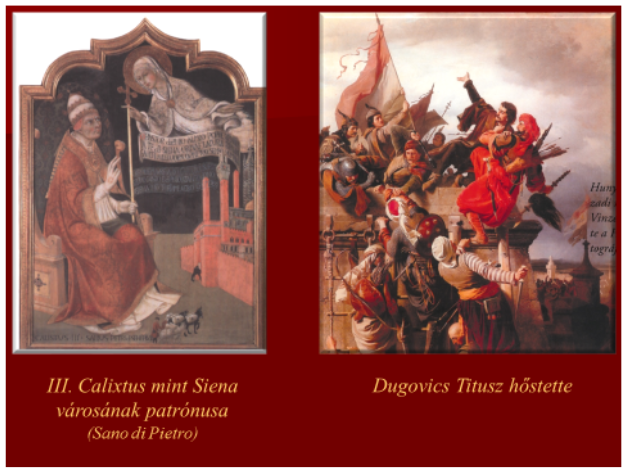
Boundless joy took over the Christian world, the Pope ordered a new church holiday to commemorate the victory, the Transfiguration of the Lord. The joy was mixed with sad news when, on August 11, 1456, the plague took away the Turkish beater, the "defender of the faith", with which the Pope honored Hunyadi. Two months later, on October 23, another hero, János Kapistzrán, was also taken by the plague in Újlak castle.
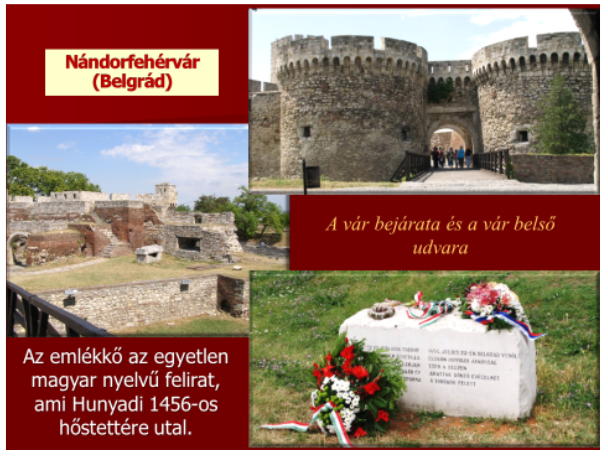
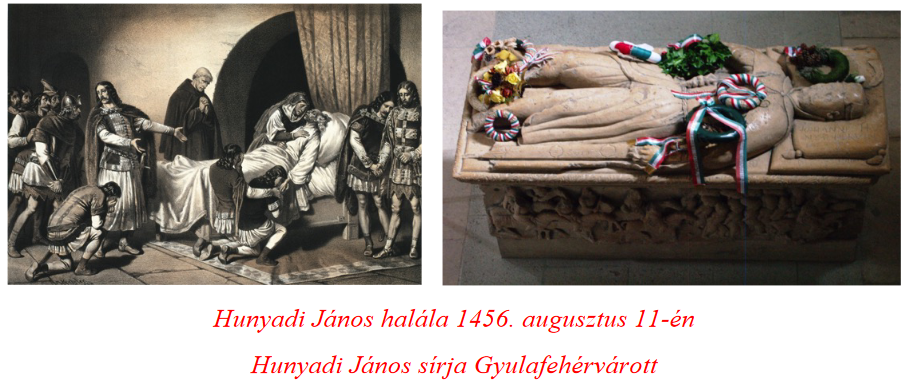
The memory of János Hunyadi is preserved by numerous statues and monuments throughout the Carpathian Basin. From Transylvania through the settlements of the motherland to the Highlands, the glorious memory of the Turkish beater can be discovered everywhere.

Author: Ferenc Bánhegyi
(Cover image: Balázs Both/pestbuda.hu )
The parts of the series published so far can be read here: 1., 2., 3., 4., 5., 6., 7., 8., 9., 10., 11., 12., 13., 14., 15., 16., 17., 18., 19., 20., 21., 22., 23., 24,, 25., 26., 27., 28., 29/1., 29/2., 30.

